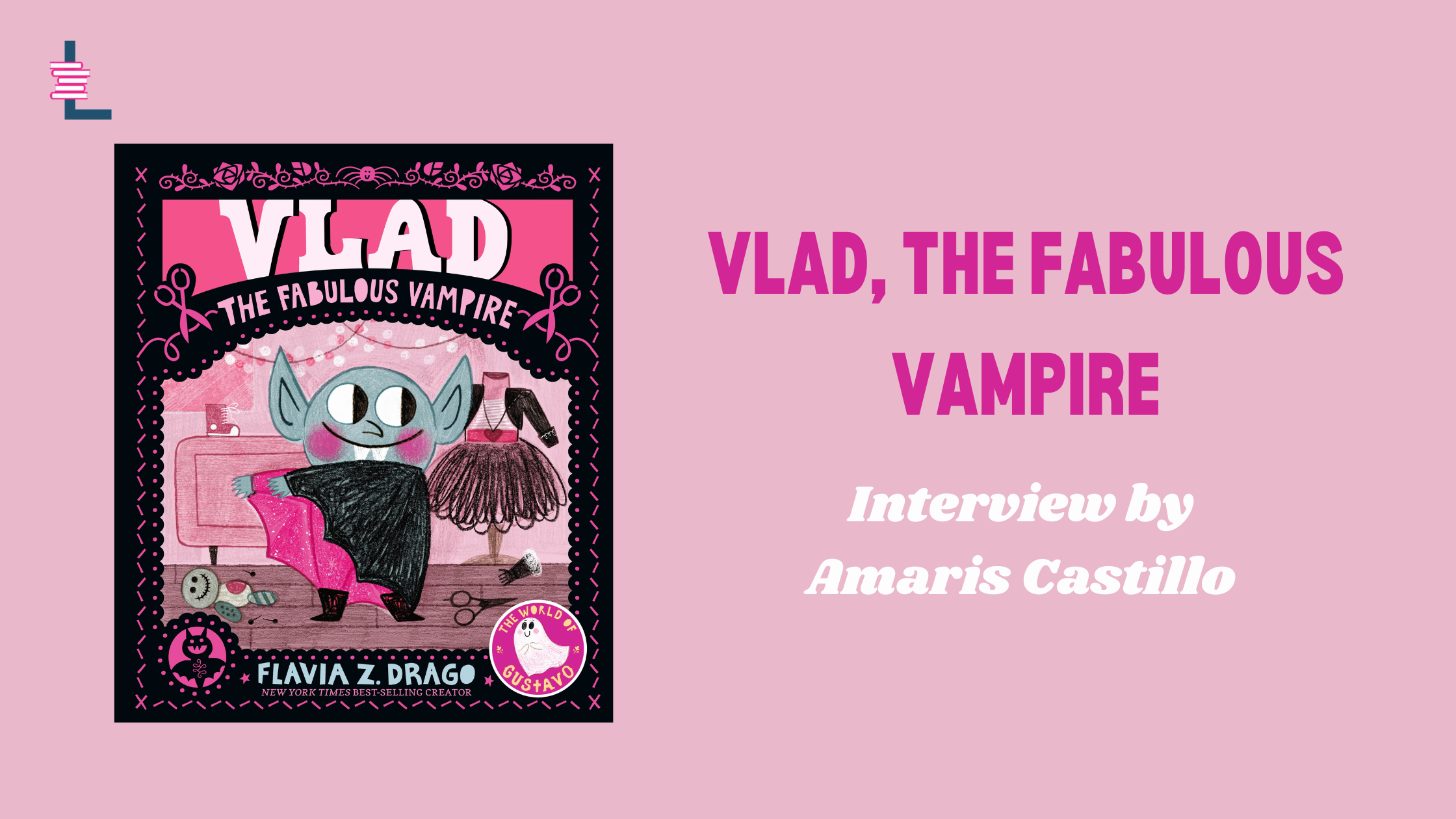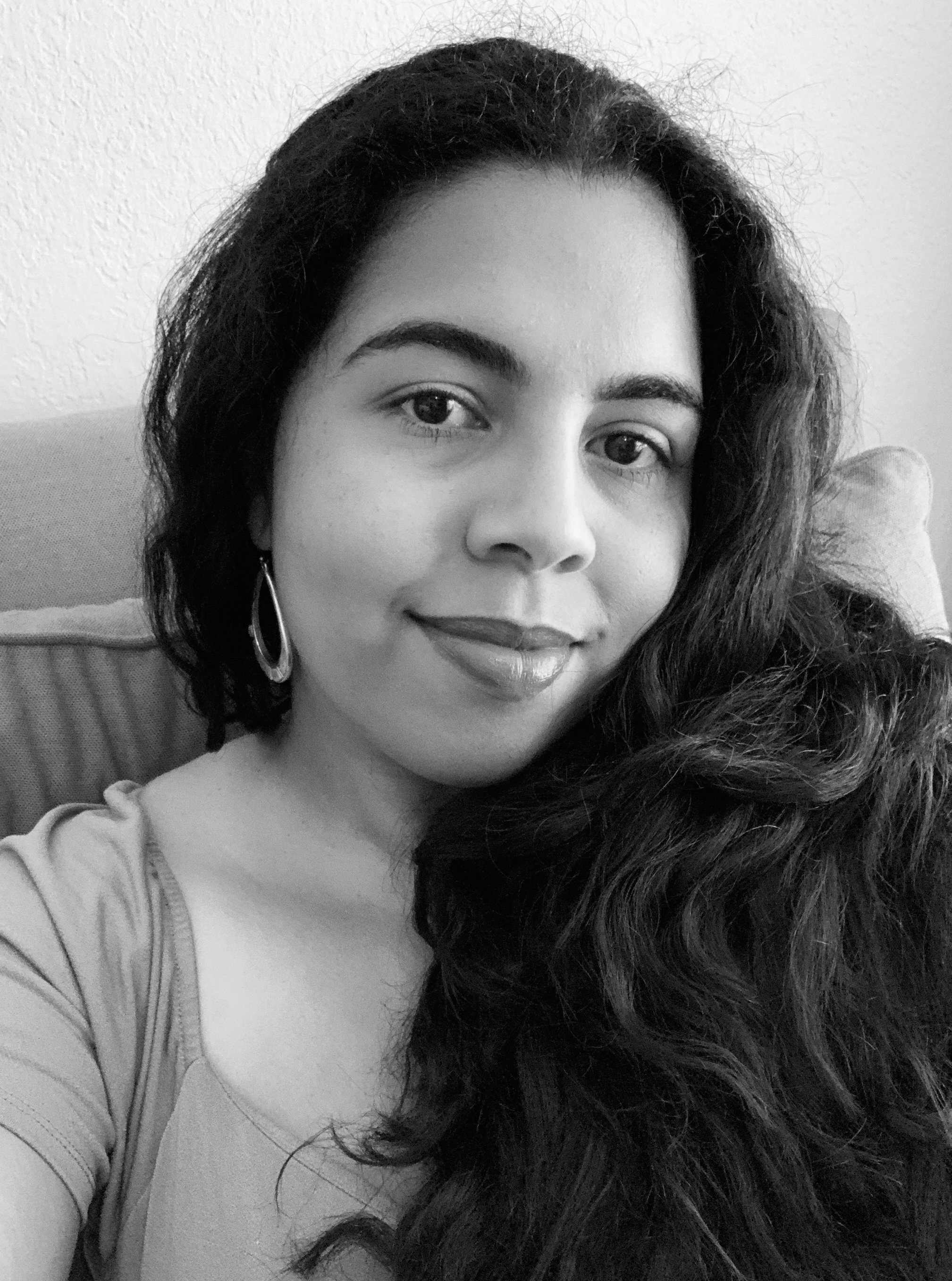Deep in the Dark Woods lives a vampire named Vlad. He loves fashion, but wears only black outfits like his friends. Black is an all-time classic in their world.
But Vlad has a big secret beneath his cape: He has pink cheeks—so bright that they make him look horribly alive. The stout vampire worries his friends would stop liking him if they found out. So he devises a plan. Vlad turns his fashion obsession to good use by designing clothes that can hide his rosiness.
Soon after, Vlad discovers that his friend, Shelley, also has a secret of her own. Could they figure out how to be comfortable in their own skin, together?
Vlad, the Fabulous Vampire is a charming and uplifting book about the journey to self-acceptance by acclaimed author-illustrator Flavia Z. Drago. Out now from Candlewick Press, the picture book is the latest installment in Drago’s World of Gustavo series—a delightfully monstrous world that began with her 2020 New York Times #1 bestseller, Gustavo, the Shy Ghost. The book’s Spanish version—Vlad, el vampirito fabuloso—was released simultaneously.
Drago, who was born in Mexico City and now lives in the UK, spoke with me on behalf of Latinx in Publishing about the creation of Vlad the vampire, what keeps her drawn to this world of monsters, and more.
“Monsters are misfits. Monsters are just reflections of ourselves, in a way. But in making monsters fearful, we have kind of detached ourselves from the things that we fear about ourselves as well, so to speak. So I just think it’s good to look back at them. ”
This interview has been edited for clarity and brevity.
Amaris Castillo (AC): Congratulations on Vlad, the Fabulous Vampire! What inspired this story?
Flavia Z. Drago (FZD): That’s a good question. I did Gustavo, the Shy Ghost, which is a book about a ghost. After I finished that book, I started working on Leila, the Perfect Witch, a book about a witch. I had this little vampire character who appeared as I was doing sketches for another book actually, called Monsters Play… Peekaboo! It’s monsters playing hide and seek, and I basically drew sheets with different shapes and you need to guess which monster is hiding underneath each sheet. The sketches for the book had different monsters, and one of them was a vampire.
As I was working on Leila, I was allowing myself to do a bit of play with the pencil on the sketchbook. And I drew the vampire wearing pink clothes. I thought it could be fun to have a gothic-looking character wearing something that would feel very opposite to what a gothic world is. I didn’t do anything with him. I just knew I liked him and I showed it to my publishers, and they also liked him. We knew we wanted to make a book, so as I was working on Leila, I had the idea that the next book was going to be about a vampire. But then I didn’t know what his problem was going to be. I knew that he was a vampire who liked wearing pink, but I didn’t know what his story was.
It was actually my partner who suggested, “Well, maybe he has rosy cheeks and that’s his problem. And he wants to hide his cheeks [by] wearing clothes.” So he’s a vampire who likes pink. He feels very self-conscious about having rosy cheeks that make him look very much alive, which is not what a vampire is supposed to look like. I thought it could be fun to play with that and make it a book about learning how to love yourself—which is an everyday task, and which we all struggle with in very different ways.
AC: Your main character, Vlad, has a passion for fashion, but dresses only in black like all of his vampire friends. He’s been keeping a secret—that he has rosy cheeks. He feels a need to hide this from others. How did you decide on this particular struggle for your vampire protagonist?
FZD: I thought it was fitting. It was a black-and-white world, and Vlad is going to be very happy to live in that world. He’s very creative and he loves fashion. There’s nothing he loves more than fashion. But because he has this problem with his rosy pink cheeks, he feels like he can’t wear fun clothes because he has to cover his cheeks with the same boring black outfit all over again. So he can’t be himself. He can’t be who he really wants to be.
And so one day, he has this idea: Maybe I can actually use fashion to cover my cheeks. But that’s a bit futile because, in the end, that’s not who he really is. He is a vampire who has pink rosy cheeks, and he needs to learn how to love it. The thing I didn’t know was that he was going to have this friend who ends up being a key character in this story.
AC: I love his friend because she had a secret as well. I don’t want to give out a spoiler, but that was really cute.
FZD: I think it’s something that happens to all of us. We feel ashamed of something about ourselves, and the only way of getting through it is [by] recognizing it and maybe sharing it with others. So that’s what the characters in my book need to do. They just don’t know how to, and then they find out.
AC: This story is set in the same world as your best-selling picture book, Gustavo, the Shy Ghost. And by now, you’ve had several books on monsters and witches. You bring your signature flair to the other characters—bats, witches, ghosts. What about this world keeps drawing you back in?
FZD: It all just started with Gustavo. When I made Gustavo, I wasn’t aware that I was going to end up developing a whole world of monsters. After I finished Gustavo, I baked a unicorn cake with my family and I posted the pictures on Instagram. When I was having a chat with my agent, Claire Cartey, she was like, “Why don’t you make a book about baking?” I was like, “No, that’s just boring.” And then I was like: Hang on a minute. I have a witch. Witches bake gingerbread houses. And that’s just a really fun and good excuse to draw witches [Laughs]. I’ve always loved horror films and folk tales, so I thought it could be a really fun opportunity to draw some of the things that I enjoy the most.
As I was working on Leila, the Perfect Witch, I ended up thinking about Vlad. And at the same time, I started doing this PhD and researching horror as a genre in the children’s picture book format or medium. I guess it just coincided. I started making books about monsters and then I decided to become a researcher. That just prompted me to think more deeply about monsters and how I could use them in my picture books—and that’s what I’ve started to do.
AC: There’s a big lesson here in being yourself, and how sometimes you need a friend to help you get there. How did you work to bring that onto the page?
FZD: That was really, really hard, because I didn’t want it to be preachy. So I wrote and rewrote the words many times. I wanted to keep it as open as possible because I didn’t want to say, ‘This is how you should feel about yourself.’ I wanted to keep it open, so that whoever is reading it could identify with what Vlad is going through. So I had to think very carefully about the words on the page.
My publishers and I went back and forth, and back and forth. We had many, many proofs. I think there’s at least maybe 13, 15 different proofs with different writing. Up until the last minute I was still thinking of changing the ending. But it just ended up being what it is now.
AC: What are you hoping readers take away from Vlad the Fabulous Vampire?
FZD: I want them to enjoy the world that I’ve created and enjoy all of the details. I want them to feel the love for monsters that I feel. Monsters are misfits. Monsters are just reflections of ourselves, in a way. But in making monsters fearful, we have kind of detached ourselves from the things that we fear about ourselves as well, so to speak. So I just think it’s good to look back at them.
On the other hand, I would like for people to see the book. Hopefully they’ll identify with Vlad in one way or another—whether it’s because they feel self-conscious about their physical appearance, about their identity, about their nationality—about anything. This is why I think vampires and monsters also work, because they don’t point out to a single thing you’re afraid of. You can be anything. So it’s very versatile in that sense.
Flavia Z. Drago was born and raised in Mexico City. As a child, she wanted to be a mermaid. When that didn’t happen, she began her career as a graphic designer and a children’s book illustrator. Her debut, Gustavo, the Shy Ghost, was a smashing success and #1 New York Times bestseller. She is also the author-illustrator of Leila, the Perfect Witch and two monster-themed board books, Monsters Play… Counting! and Monsters Play… Peekaboo! She loves colors, textures, and shapes and enjoys creating them with different materials and a bit of digital sorcery. Flavia Z. Drago divides her time between the UK and Mexico.
Amaris Castillo is an award-winning journalist, writer, and the creator of Bodega Stories, a series featuring real stories from the corner store. Her writing has appeared in La Galería Magazine, Aster(ix) Journal, Spanglish Voces, PALABRITAS, Dominican Moms Be Like… (part of the Dominican Writers Association’s #DWACuenticos chapbook series), and most recently Quislaona: A Dominican Fantasy Anthology and Sana, Sana: Latinx Pain and Radical Visions for Healing and Justice. Her short story, “El Don,” was a prize finalist for the 2022 Elizabeth Nunez Caribbean-American Writers’ Prize by the Brooklyn Caribbean Literary Festival. She is a proud member of Latinx in Publishing’s Writers Mentorship Class of 2023 and lives in Florida with her family and dog, Brooklyn.










